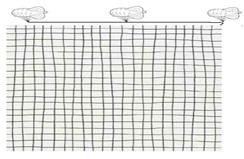 Click for Site Directory
Click for Site Directory
Vladimir Putin Plans
to Deploy a Balloon Barrage Net to Defend Russian Air Space
The Russians have
announced plans to create barrage balloons supporting nets in an effort to
defeat Ukrainian drones that are attacking Russia.
This is not a
new idea, as in 1917 Britain erected several balloon borne structures to try and
protect London from German air attacks.
While it had
a definite impact on the morale of German aircrew it was not that successful.
Britain had
managed to acquire a number of Observation Balloons and decided to set up
several lines of defence to try and prevent German aircraft from
getting their
bomb loads onto certain parts of London.
To do this they set
up a complicated series of three observation balloons linked together
horizontally from which hundreds of lengths of piano wire hung
down with weights on the bottom to keep the wires taut. These were then let up to heights of 8,000 feet.

It was
felt that bomb-laden German aircraft would not be able to fly over the nets and
would hopefully fly into the wires and crash.
In
theory it seemed a great idea but the practical reality was that such balloon
borne structures were extremely difficult to operate.
The weather
was one major stumbling block with high winds causing mayhem and causing
balloons to deflate and cause the entire structure to
collapse. The
other big problem was that the balloons lost gas and required regular topping
up. The process of synchronized hauling down of three
balloons was
virtually impossible and fraught with danger as was the reverse process of
letting them up. Lightning strikes were not uncommon.
In cold weather ice
and snow would accumulate on the balloons and cause lack of lift. Once one
balloon had its lift compromised then the remaining
lift provided by
the other balloons was insufficient to maintain the net and it would collapse.
Such proposed Russian balloon borne nets would require
large numbers of
personnel to operate and deploy the balloons as well as multiple winch systems
to provide letting up and hauling down of these nets.
Thanks to Gazprom Russia
has plenty of Helium to inflate the balloons and is unlikely to use Hydrogen as
a lifting gas due to the dangers inherent in its use.
The Russian idea is to
fly a trio of balloons horizontally with a span of 300 metres and have a light
net suspended between them at a maximum altitude of
250 metres.

Each balloon would have a 30 Kilogram lift suggesting that
the maximum weight of net it could support would be below 100 Kilograms.
If intended to defeat drone attacks, it is clear that the
Russian balloon net defence itself, would be very vulnerable to drone attacks as
the balloons could be
easily punctured with drone shrapnel. These Russian
balloons are large and easily seen and as such make easy targets. Ukraine would
probably have to send in
several waves of drones, with the first waves to destroy
the balloons leaving the sky relatively undefended from drone attacks.
Ukraines accuracy with hitting small Russian battlefield
targets is legendary and the balloons would make easy targets for the Ukrainian
drone operators.
The Nazis used the same tactic in 1939-45 when prior to an
attack on Britain they would send in Nazi aircraft equipped with special
cutting devices to cut the
single cables of barrage balloons and render the barrage
balloon defence of no value and meant that enemy bombers could fly to their
targets unimpeded by
barrage balloons.
In 1940 we had many static balloon sites and it did not take
long for the Nazis to map their localities and brief their crews to avoid
certain areas where
balloons were known to be. The same thing applies to any
Russian balloon nets. The ability to make these balloon nets mobile is fraught
with difficulties and the
locations of the proposed balloon nets would soon be part of
regular intelligence reports. The proposed Russian nets would not be continuous
and would have
many vulnerable gaps through which drones could pass.
Plus there would be nothing to stop the drones flying over these relatively low
level nets.
The Daily Telegraph ran an article on the news from Russia.
This action by Russia shows quite clearly that they are being
subjected to considerable damage by successive drone attacks and an element of
desperation
has now crept in. Putin is welcome to waste more resources and
personnel but this proposed net will not make any significant defence for Russia
from Ukrainian
drone attacks. This may make news but is not really an
effective game changer in the Ukrainian War against Russia.